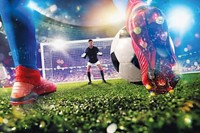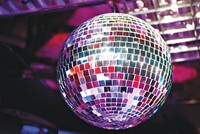Advertisement
Grab your lab coat. Let's get started
Welcome!
Welcome!
Create an account below to get 6 C&EN articles per month, receive newsletters and more - all free.
It seems this is your first time logging in online. Please enter the following information to continue.
As an ACS member you automatically get access to this site. All we need is few more details to create your reading experience.
Not you? Sign in with a different account.
Not you? Sign in with a different account.
ERROR 1
ERROR 1
ERROR 2
ERROR 2
ERROR 2
ERROR 2
ERROR 2
Password and Confirm password must match.
If you have an ACS member number, please enter it here so we can link this account to your membership. (optional)
ERROR 2
ACS values your privacy. By submitting your information, you are gaining access to C&EN and subscribing to our weekly newsletter. We use the information you provide to make your reading experience better, and we will never sell your data to third party members.
Education
Newscripts
Drinking At Work, Spilling Coffee
by Craig Bettenhausen
June 11, 2012
| A version of this story appeared in
Volume 90, Issue 24

Watching cartoons while getting drunk is not a traditional path to success. But there may be room for a few beers in the creative process.
In a recent study published in Consciousness & Cognition, a group of self-identified social drinkers watched the Disney animated film “Ratatouille” while drinking enough cocktails to give them a blood-alcohol level of around 0.075—roughly two to three servings of alcohol for an average person. The researchers then gave each volunteer a Remote Associates Test (RAT), which uses riddles to measure creative problem-solving ability (DOI: 10.1016/j.concog.2012.01.002). The buzzed participants not only solved more RAT problems correctly than the sober control group but also solved them an average of four seconds faster.
Jennifer Wiley, Andrew F. Jarosz, and Gregory J. H. Colflesh of the University of Illinois, Chicago, propose that people under the influence are less able to screen out peripheral information than sober people. “Sometimes a reduced ability to control one’s attention can have positive implications for select cognitive tasks, including creative problem solving,” the authors write.
Relative to the sober control group, the tipsy subjects showed improved performance on the RATs that correlated strongly with decreases in working memory capacity (WMC). “While detrimental for analytic problem solving, this is exactly the type of dynamic required for success in creative problem solving,” the researchers write. A high WMC allows a subject to focus on a given problem—often a benefit in the workplace. But when the challenge of a job is in finding the correct strategy, that focus can keep a person from moving on to a new approach if the first—or third—one isn’t fruitful.
Alcohol can be dangerous, and the researchers were careful to reject volunteers who would be putting themselves at risk by participating. But as for a few drinks on the job, the authors posit, “moderate intoxication may be one way to alter attentional states to be more conducive to creative processing.”
Even people not under the influence sometimes have trouble carrying drinks without spilling.

But help is on the way: Hans C. Mayer and Rouslan Krechetnikov of the University of California, Santa Barbara, have at last teased out the physics behind spilling a drink while walking and found that focus on the cup is a key parameter.
In a set of experiments described in a recent article in Physical Review E, the researchers applied a custom image-analysis routine to the titular question, “Walking with coffee: Why does it spill?” (DOI: 10.1103/physreve.85.046117). Volunteers carried cups of coffee as they walked at self-selected speeds along a straight line. At the same time, the team recorded the motion of the cups, the gaits of the walkers, and the sloshing of the coffee (giggling at each spill, Newscripts likes to imagine).
As departmental custodians muttered disapprovingly, the team developed a mathematical model from the data. First, “the maximum acceleration occurring early on in the walking sets an initial sloshing amplitude. This interface deflection is then amplified by the back-and-forth and pitching excitations,” they write in the paper. “The noise component of motion contains higher-frequency harmonics,” which generate a swirl.
So, the team found, the rhythmic motion of walking maintains or amplifies the sloshing, and the occurrence of a spill starts to depend heavily on focus. Volunteers who were told to pay attention to their cups lasted longer before spilling or avoided a spill entirely, suggesting that “walking with coffee is a control problem,” the researchers say. Subsequent studies, they add, could probe whether increased focus allows a coffee drinker to identify “the resonant sloshing frequency” and perform “a targeted suppression of the resonant mode,” or simply makes them more careful about carrying the cup.
Craig Bettenhausen wrote this week’s column. Please send comments and suggestions to newscripts@acs.org.
.





Join the conversation
Contact the reporter
Submit a Letter to the Editor for publication
Engage with us on Twitter